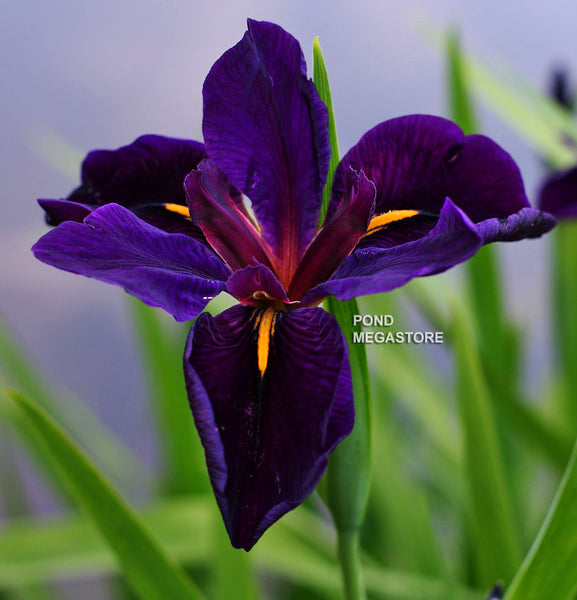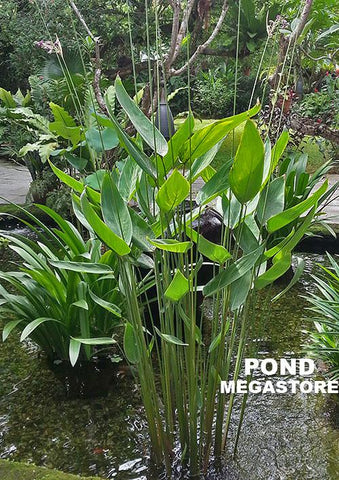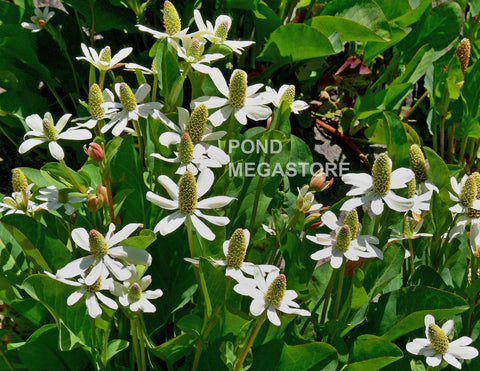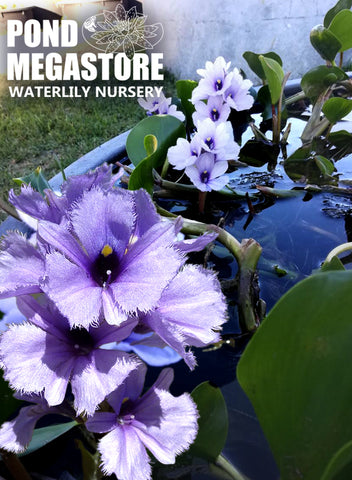Black Gamecock Louisiana Iris is always a customer favorite! This deep-purple iris has stunning, velvety, purple flowers with bright-gold signals and grows to 20 inches tall. A rich and exotic look for your springtime, water garden feature or your terrestrial garden. Black Gamecock Louisiana Iris has green, sword-like foliage that stays nice all summer long. Blooms early to late spring, depending on zone.
Height Grows to 20 inches tall
Width 12 - 18 inch spread
Sunlight Requirements Full sun to part shade (More bloom in full sun)
Moisture Requirements Moist, well drained soil or with 1 inch of water above soil in the pond
Bloom Blooms early to late spring, depending on zone
Divide your iris every 2 - 3 years, as needed. Divide in late summer or early fall.
Zone Hardy in zones 6 - 12
Black Gamecock Iris prefers moist soil along the edges of your pond or edge of stream beds. Blooms early to mid summer. Black Gamecock Iris are not picky about soil and do well in sandy soil, as well as in heavy loam soil. For terrestrial gardens, plant bulbs in moist, loamy soil with additional composted material, in full sun to part shade. Plant bulbs a foot apart, with pointed side up and roots down, with an inch of soil over the rhizomes. Water once planted and add up to an inch of water per week, allowing soil to drain between waterings. Also great in your flower bed, bog area or naturalized in moist areas. Divide every three years. When placing in the pond, use a large container with holes such as a planting basket or fabric planter. Use heavy loam soil with only an inch of water above the soil as Black Gamecock Iris are shorter and prefer very shallow water above the roots. Fertilize with Waterlily World Fertilizer Tabs + Humates once a month, from May until August. Divide rhizomes as necessary.
Pondmegastore Tip When using planting baskets for the pond, line your baskets with newspaper to keep soil from going through the holes of the planting basket.
What Is Loam Soil?
Loam soil is a good mixture of Topsoil and Sand
If you are lucky enough to have good topsoil in your backyard, by all means, use your topsoil. All you will have to do is add fertilizer. If you are not so lucky--and your backyard is sand or heavy red or yellow clay, you can mix up a batch of loam soil.
You can create your own loam soil by mixing these two ingredients together
- 2/3 Inorganic Topsoil (Little or no organic material added)
- 1/3 Pool Filter Sand
Mix together thoroughly with a little water. Your soil should clump when squeezed. If your soil is mixed properly, it will not muddy your pond water.
You can purchase inexpensive bags of inexpensive / poor Topsoil at Lowes or Home-Depot. Good soil clumps together as a ball in your hand with only a little moisture.
Don't buy brands like Scott's or Miracle-Gro, as they will contain too much organic matter that can foul your water. Buy an unbranded bag of topsoil instead.
You can purchase Pool Filter Sand at any store that sells pool supplies.
Loam soil is well suited for all aquatic plants (except oxygenators). Oxygenators rarely need to be planted, just anchored in the substrate or in a container filled with sand or 1/8 inch pea gravel.
Sand holds little water but does allow for aeration and drainage.
Some DO's and DON'TS regarding Aquatic Planting Soil
DO NOT use potting soils ( as they are too light and will float right out of the pot). Potting Soil has organic material that will rot and foul your water!
DO NOT add too much composted material (as it is too rich in organic matter and it will ferment underwater and destroy the ecology of your pond).
DO NOT use 100% calcined clay as there is no nutritional value in calcined clay.
DO NOT add rocks, stones or pebbles to the top of your planting container as this will inhibit the growth of your plants. Plants do not grow in rocks and stones in nature!
DO NOT purchase API Aquatic Planting Media or Microbe-lift Aquatic Planting Media as these products are NOT suitable for waterlilies, lotus or most other pond plants. They are suitable for submerged grasses ONLY!









